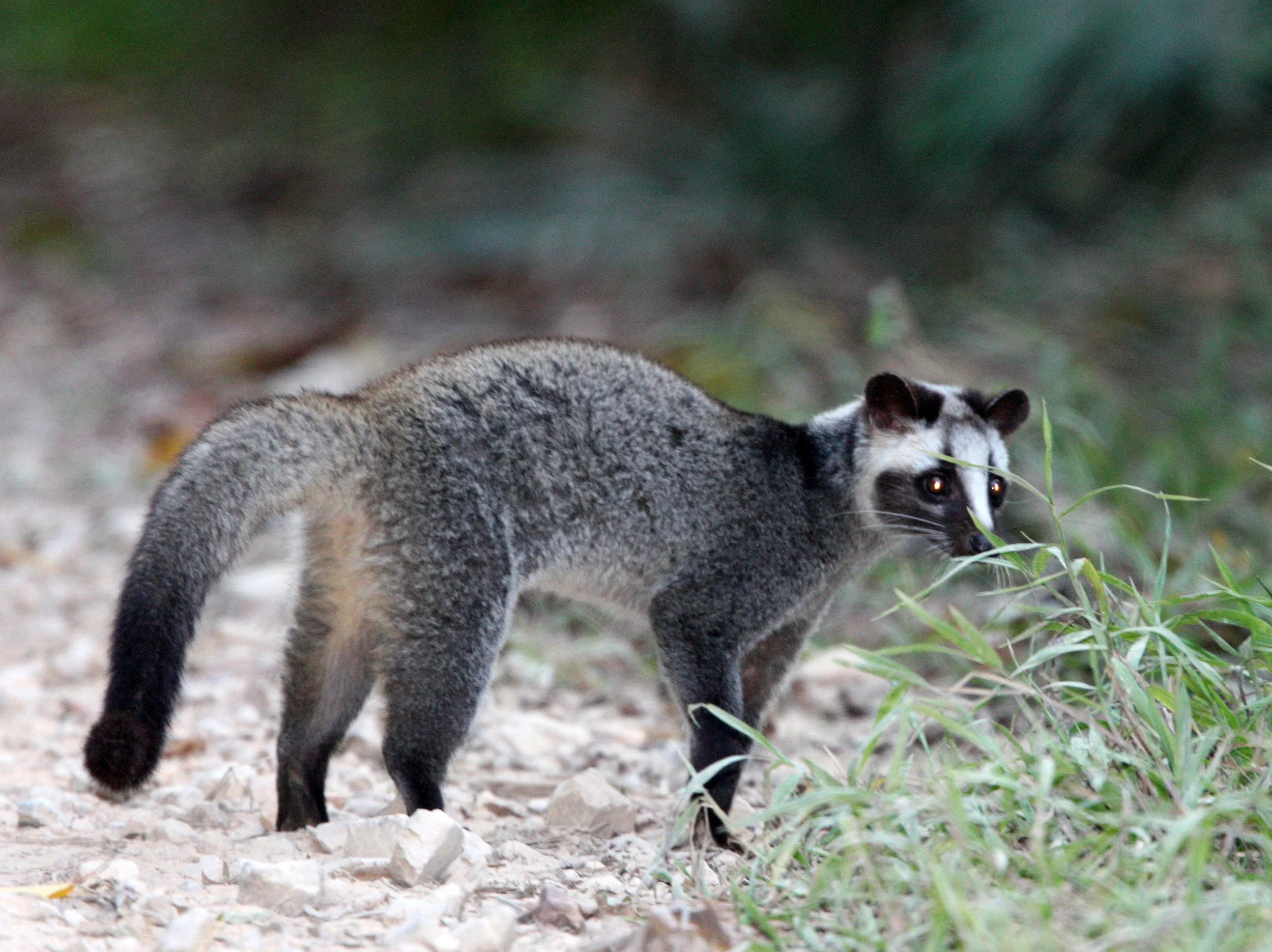
Masked Palm Civet
The Masked Palm Civet (Paguma larvata), also called the gem-faced civet, is a palm civet species native to the Indian subcontinent and Southeast Asia. It has been listed as least concern on the IUCN Red List since 2008 as it occurs in many protected areas, is tolerant to some degree of habitat modification, and widely distributed with presumed large populations that are unlikely to be declining.
In 2003, masked palm civets at a wildlife market in China were found to have been infected with the severe acute respiratory syndrome coronavirus.
The masked palm civet's fur is grayish to ochraceous, black on the head, shoulders and neck, and blackish brown on the tail and feet. It has a white blaze on the forehead; white marks above and below the eyes extend to the ears, forming a half-collar. In morphology the masked palm civet resembles other palm civets, but does not have spots or stripes. Its tail is more than two-thirds the length of head and body. It has two pairs of mammae.
The whitish mask extends laterally to the far edges of the cheeks and caudally up the forehead, past the ears, and down the back of the neck before stopping just under the shoulder blades. The eyes are surrounded by white fur that can vary from faint, incomplete outlines to well-defined blotches. The lips, chin, and throat are white. In some, white stripes of fur, comparable to sideburns on humans due to shape and location, curve up from the throat. These curves vary in thickness and have ends that terminate either in small blotches at the ear base or large blotches that surround the base of both darkly furred ears.
The masked palm civet is distributed from the northern parts of the Indian subcontinent, especially the Himalayas, ranging eastwards across Bhutan, Bangladesh, Myanmar, Thailand, Peninsular Malaysia, Laos, Cambodia, Vietnam to China, Borneo, Sumatra, Taiwan, and the Andaman and Nicobar islands. It was introduced to Mainland Japan and Ryukyu Islands. It has been recorded in both evergreen and deciduous forest, and in disturbed habitat. It also inhabits fragmented forest habitats, albeit at reduced density.
It is also found in Japan, where genetic studies indicate that it is an introduced species with multiple introductions over the centuries, at least two of which are from Taiwan.

Masked Palm Civet (Paguma larvata) Kaeng Krachan NP, Thailand









































The below individual is a possible Masked Palm Civet from the Kinabatangan River area of Sabah Malaysian Borneo


Masked Palm Civet (Paguma larvata) Labahe Nature Reserve, China 2024

Masked Palm Civet (Paguma larvata) Labahe Nature Reserve, China 2024
















